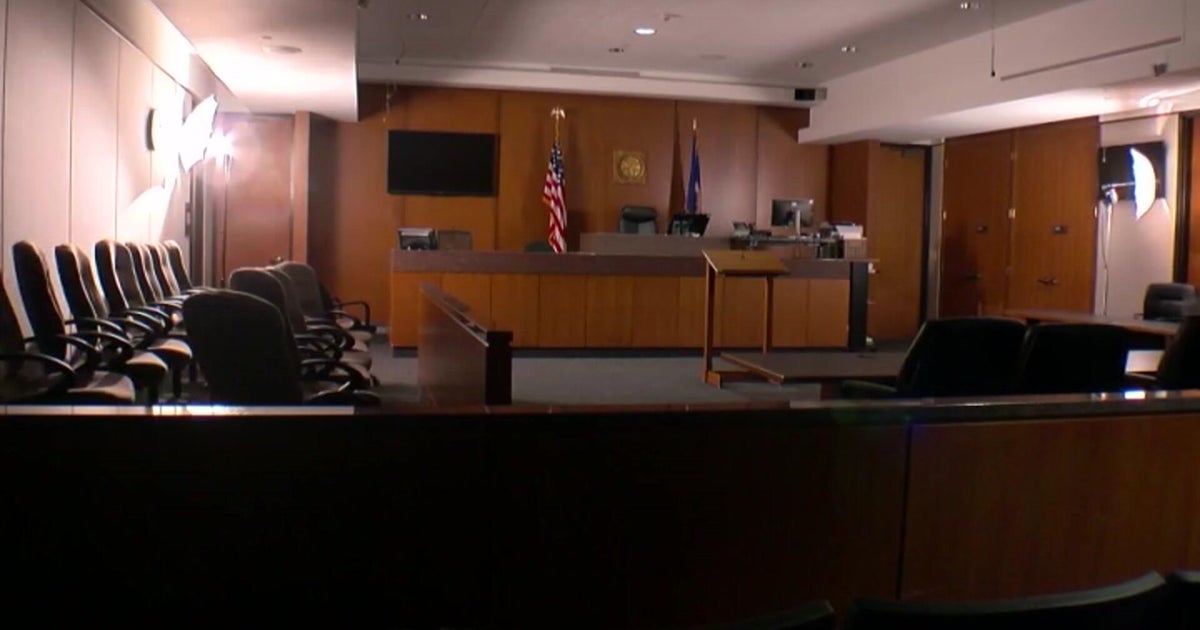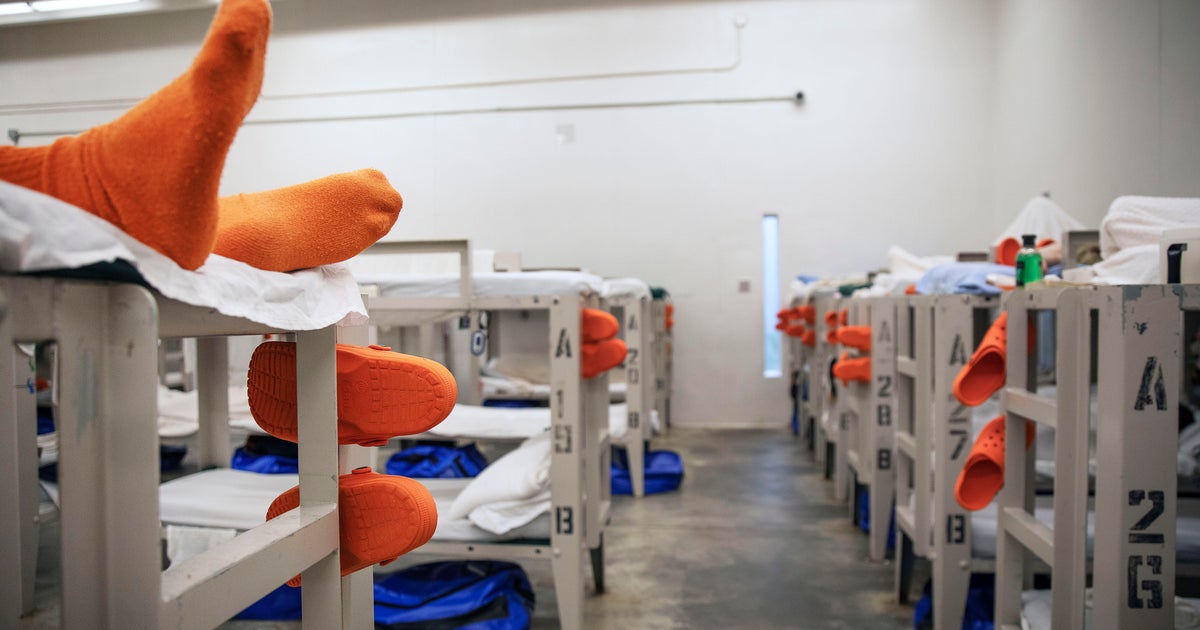The blueprint of Trump's deportation plan: A questionable approach by Eisenhower
Former President Donald Trump has sought to make immigration a defining issue in the 2024 presidential race, pledging to oversee mass deportations if voters return him to the White House.
"The Republican platform promises to launch the largest deportation operation in the history of our country," he said at the Republican National Convention this past July, as his crowd of supporters held signs bearing the phrase "mass deportation now!"
It's a pledge Trump has made frequently this campaign cycle, including at his rallies, in a recent conversation with billionaire Elon Musk, and in the official Republican Party platform. But it is not just during this election that Trump has promised to conduct the largest deportation operation in American history. He has said it since at least 2015, when he was first running for commander in chief. He brought it up in the fourth Republican primary debate, and earlier that year, he raised the subject of mass deportation in an interview with 60 Minutes correspondent Scott Pelley.
In the last nine years, one thing has frequently come up when Trump mentions removing en masse the migrants who have crossed the border illegally: the name of another former president.
"You look back in the 1950s, you look back at the Eisenhower administration, take a look at what they did, and it worked," Trump told Pelley in 2015.
What the U.S. government did under Dwight D. Eisenhower was a massive military-style sweep. U.S. Border Patrol agents conducted raids to round up Mexican laborers from farms and ranches, then transported them deported deep into Mexico. Historians say the program tore families apart, violated civil rights — and at times, even turned deadly.
Moreover, those who have studied the Eisenhower administration's approach say this short-term show-of-force did not stop the problem.
"I would describe [it] as a very cruel operation of deportation," said immigration historian Mae Ngai, whose book "Impossible Subjects" examines how illegal migration became a central issue of U.S. immigration policy. "But also, it was a kind of political theater. It did not solve the issue of undocumented migration."
The blueprint for Trump's idea: "Operation Wetback"
Following World War II, immigration into the United States was fairly low. The U.S. government imposed strict immigration quotas that limited the number of people allowed to enter the country. The controversy over immigration arose in the early 1950s, around the Bracero program, a guest worker program for agricultural laborers from Mexico.
According to Ngai, the American growers who were hiring these Mexican laborers preferred undocumented workers because they had fewer regulations governing their treatment. This embarrassed the Immigration and Naturalization Service, Ngai said, because they wanted the farmers to only take the legally contracted Braceros.
Although the terms have since become ethnic slurs, in the 1950s, most everyone involved in immigration policy on both sides of the border referred to people who crossed the river illegally from Mexico as "wetbacks" or "mojados." In 1953, CBS's Edward R. Murrow reported on the situation at the border using that term.
"Every 30 seconds, a Mexican wetback enters this country illegally," Murrow detailed. "The number is increasing. Some days as many as 5,000 are caught and sent back in a single day."
To deal with the issue of illegal entries from Mexico, Eisenhower assigned his Commissioner of Immigration and Naturalization, Lieutenant General Joseph Swing, Eisenhower's friend and former West Point classmate. Swing concocted a military-style plan to round up and mass deport those laborers who crossed the border outside of the Bracero program. The plan became known as "Operation Wetback."
Although the U.S. had steadily increased deportations of Mexican laborers, the largest effort commenced in June 1954, when U.S. Border Patrol head Harlon Carter promised "the biggest drive against illegal aliens in history," according to a contemporaneous report by the Los Angeles Times.
Over the next year, hundreds of Border Patrol agents apprehended and deported anyone suspected of being in the United States illegally. They flew airplanes over the Rio Grande Valley to see where people were working and would check to see if there was a farm that was illegally contracting workers. While the operation included some raids in cities such as Los Angeles and Chicago, Ngai said, the primary focus was laborers near the Mexican border.
"These people were just rounded up, put on trucks and buses, driven over the border, dumped on the other side, sometimes in the desert," Ngai said.
Ngai said about a quarter of the people deported through "Operation Wetback" were put on ships and taken across the Gulf of Mexico to Veracruz in the Yucatan Peninsula.
"There was a big exposé that these ships were barely converted freighters that were very old and dirty," Ngai said. "One person in Congress called them 'hell ships.'"
According to Ngai, migrants were sometimes left in the scorching Mexican desert, with temperatures soaring over 100 degrees. "In one case, 88 people died from sun stroke, and more would have died had the Mexican Red Cross not come to their rescue," Ngai said.
"Operation Wetback," Ngai said, was largely intended to show force to two audiences: Americans living near the border who had complained about the migration problem, and the growers, in an effort to make them obey the federal hiring program. It was not intended to score political points nationally.
"It was not a campaign issue," Ngai said. "Most Americans didn't think about farm workers at the border, legal or not."
The mass deportation operation lasted about a year. The program had become expensive to maintain, and American agriculture growers had begun to comply with the Bracero program to hire Mexican workers legally, leading them to use fewer undocumented laborers.
At the time, the Eisenhower administration said it carried out more than one million "returns," but historians believe many people were deported more than once and that the actual number of people is significantly less. Two historians told 60 Minutes that some American citizens were mistakenly deported in the roundups.
How Trump's plan today connects
Former President Trump's running mate Sen. JD Vance once believed the Republican Party was being "tone deaf" to suggest millions of undocumented people could be deported. While a law student at Yale, he wrote a since-deleted blog post for the Center for World Conflict and Peace that criticized the Republican Party's immigration positions.
"Think about it: we conservatives (rightly) mistrust the government to efficiently administer business loans and regulate our food supply, yet we allegedly believe that it can deport millions of unregistered aliens," Vance wrote in 2012. "The notion fails to pass the laugh test."
Today, Vance supports Trump's pledge of mass deportation, telling the New York Times in an interview that meaningful border enforcement requires both a physical deterrent and a willingness to deport people.
"I think it's certainly reasonable to deport around a million people per year," he told the Times.
To see how Trump's plan today connects to that of the Eisenhower administration, 60 Minutes correspondent Cecilia Vega spoke with Tom Homan, the acting director of U.S. Immigration and Customs Enforcement (ICE) during the first year and a half of the Trump administration. Homan led ICE when thousands of migrant children were separated from their parents at the border, and Trump has counted Homan, a Fox News contributor, among those who will join him if he wins a second term.
Vega noted to Homan that Trump often invokes Eisenhower's name, referencing a deportation program in which civil rights were violated, migrants were deported in dangerous conditions, and some people died. Vega suggested this history might give people pause.
"That doesn't mean people are going to die," Homan said. "That doesn't mean civil rights are going to be violated. President Trump doesn't mean that."
Although he said he did not know what the Eisenhower administration's plan entailed, Homan said Trump's plan would not follow it in all aspects.
"He could say he's got the Eisenhower plan, because the Eisenhower plan was a massive deportation, but it doesn't mean all the negative things that happened are going to happen under his leadership," Homan said.
But mass deporting undocumented migrants would be much more complicated now than it was in the 1950s.
"They're not Mexican workers," Ngai said. "The large numbers of people who are crossing the border are asylum seekers. They're people who are fleeing civil war, civil strife, gang violence."
Today's migrants live in cities throughout the country, not just near the border, and many have been in the country for years, often establishing families and work histories. A study by the American Immigration Council found that mass deportation could result in the removal of millions of construction, hospitality, and agriculture workers, which would reduce the GDP by $1.7 trillion.
To see how ICE conducts targeted apprehensions today, 60 Minutes embedded with a group of ICE agents in Silver Springs, Maryland. There, the agents were locating and arresting undocumented immigrants identified by ICE as a threat to public safety, including those with criminal histories such as assault, robbery, drug and gun convictions.
60 Minutes watched as it took a team of more than a dozen officers seven hours to arrest six people, not including the many hours spent searching for them.
Matt Elliston, the director of ICE's Baltimore field office, said that deporting a mass number of undocumented migrants — such as the one million number Vance suggested — would be logistically infeasible.
"I could say here in Maryland, we would never be able to resource or find that amount of detention, which would be our biggest challenge," Elliston said. "And just the amount of money that that would cost in order to detain everybody, it'd be, you know, at the Department of Defense level of financing."
No matter how many people an administration were to deport, historian Ngai said, history suggests mass deportation is no panacea.
"You can try to have a big show, but ultimately you don't solve the problem," Ngai said. "You hurt some people, and then people don't look anymore, and the problem doesn't go away."
The video above was produced by Brit McCandless Famer and edited by Scott Rosann.





